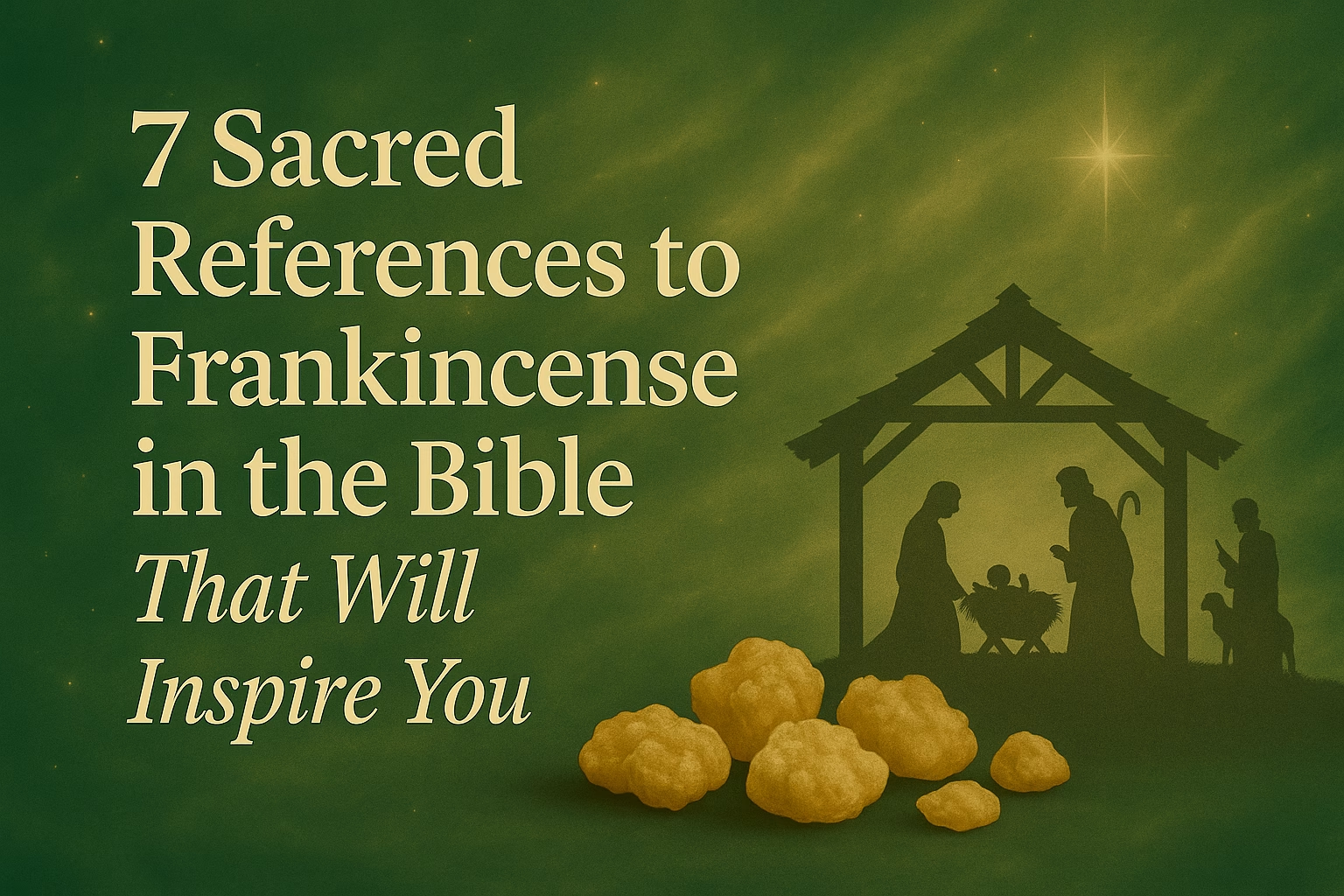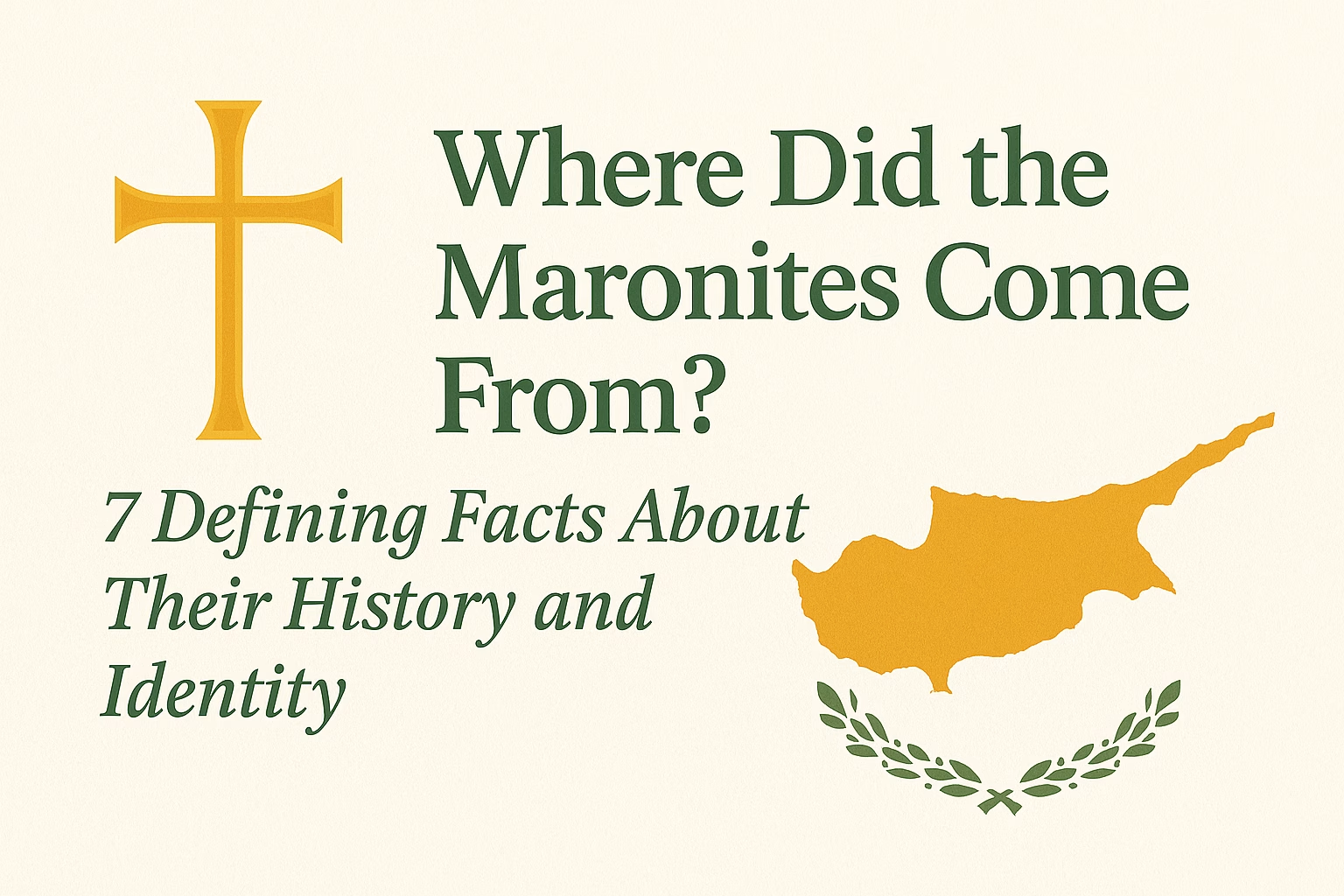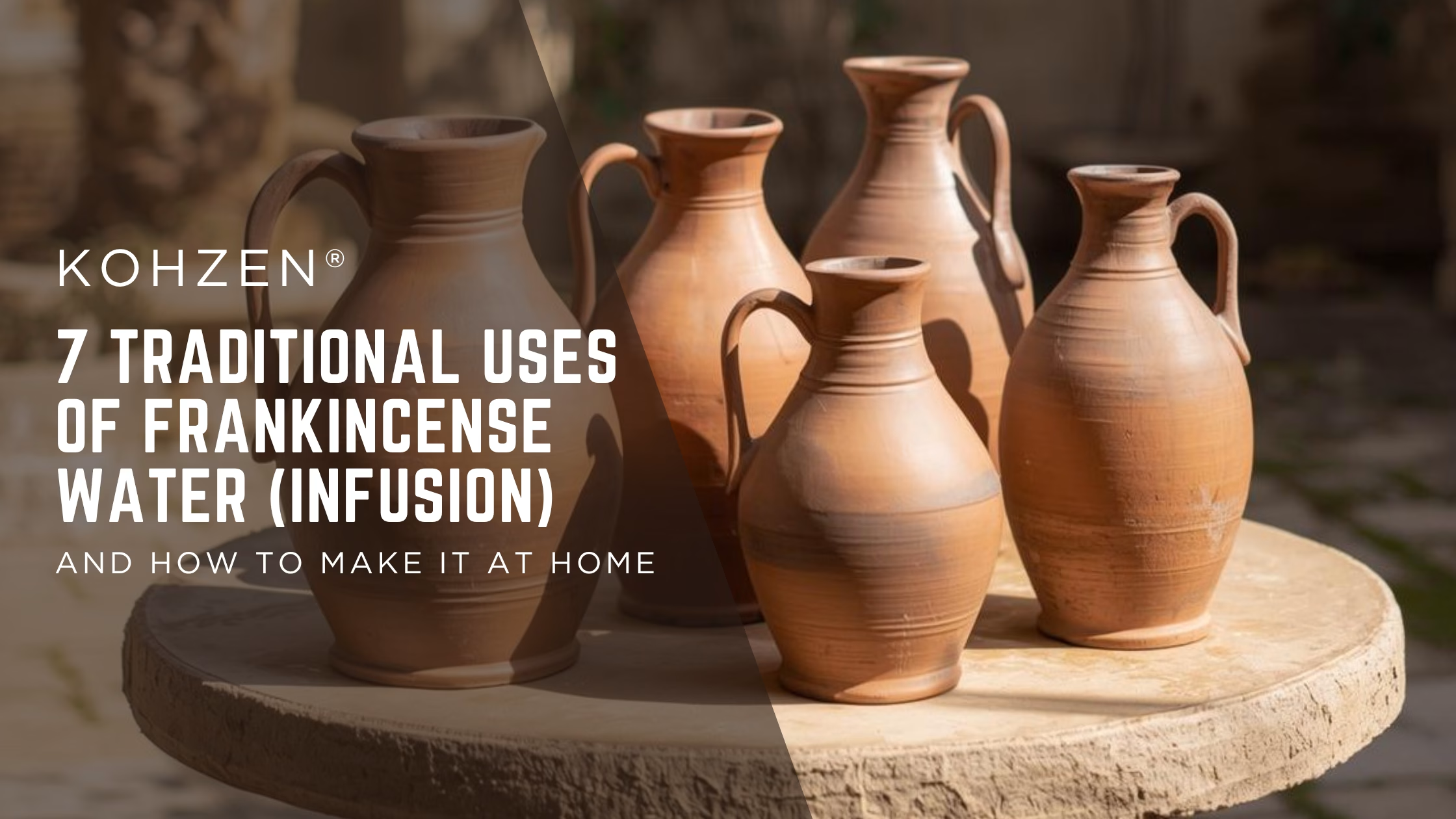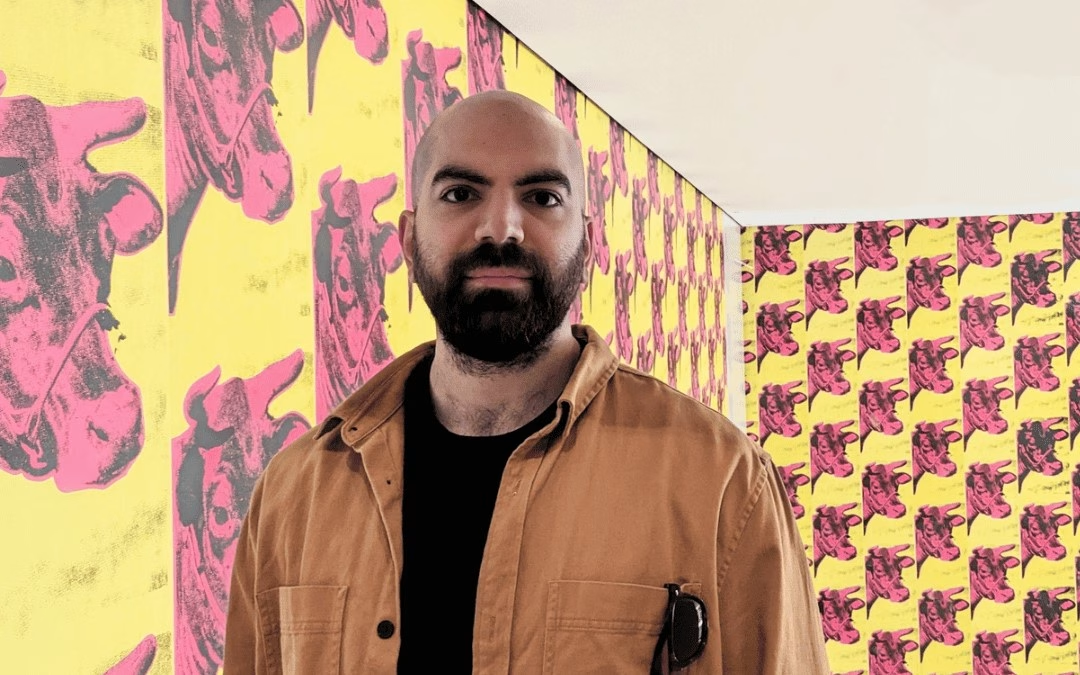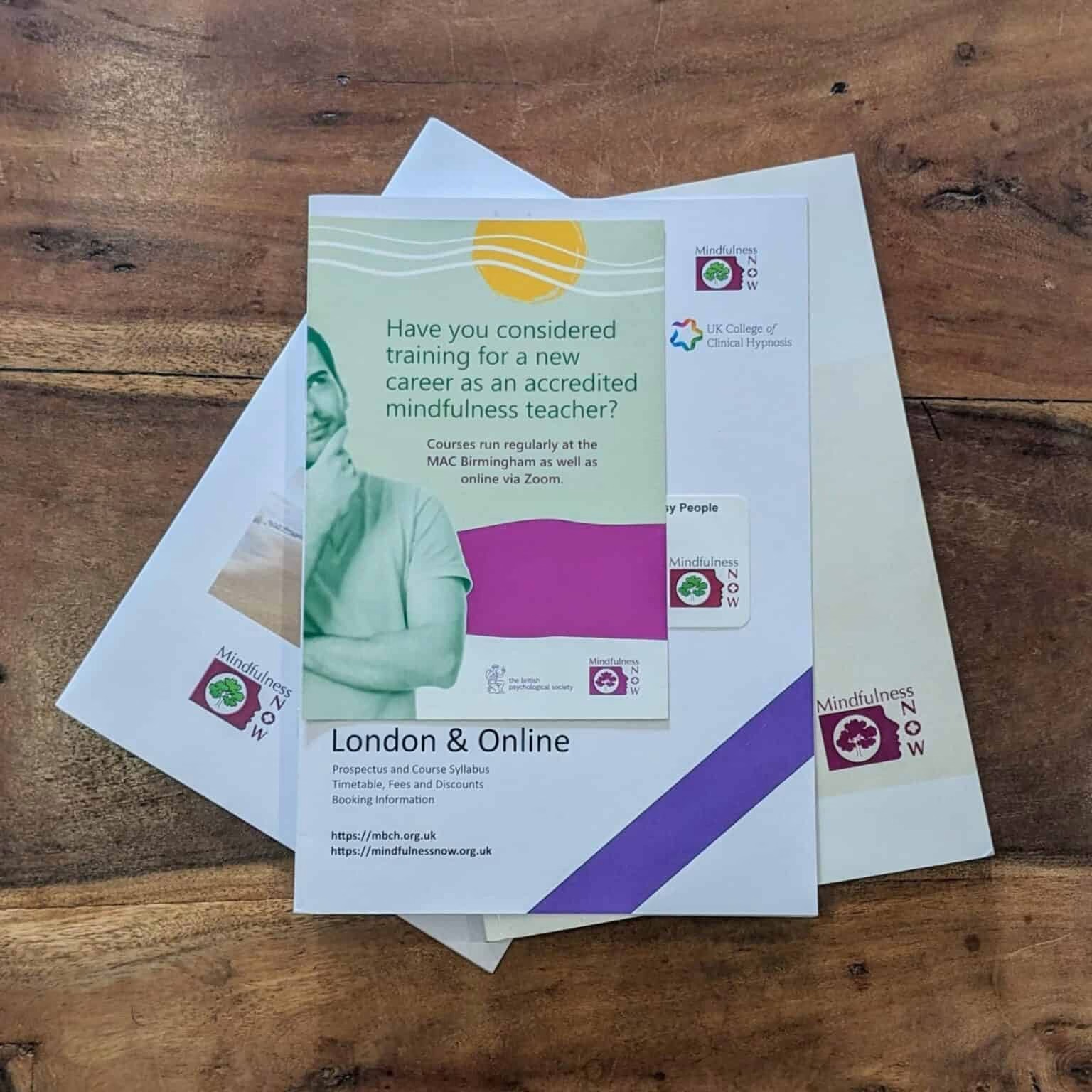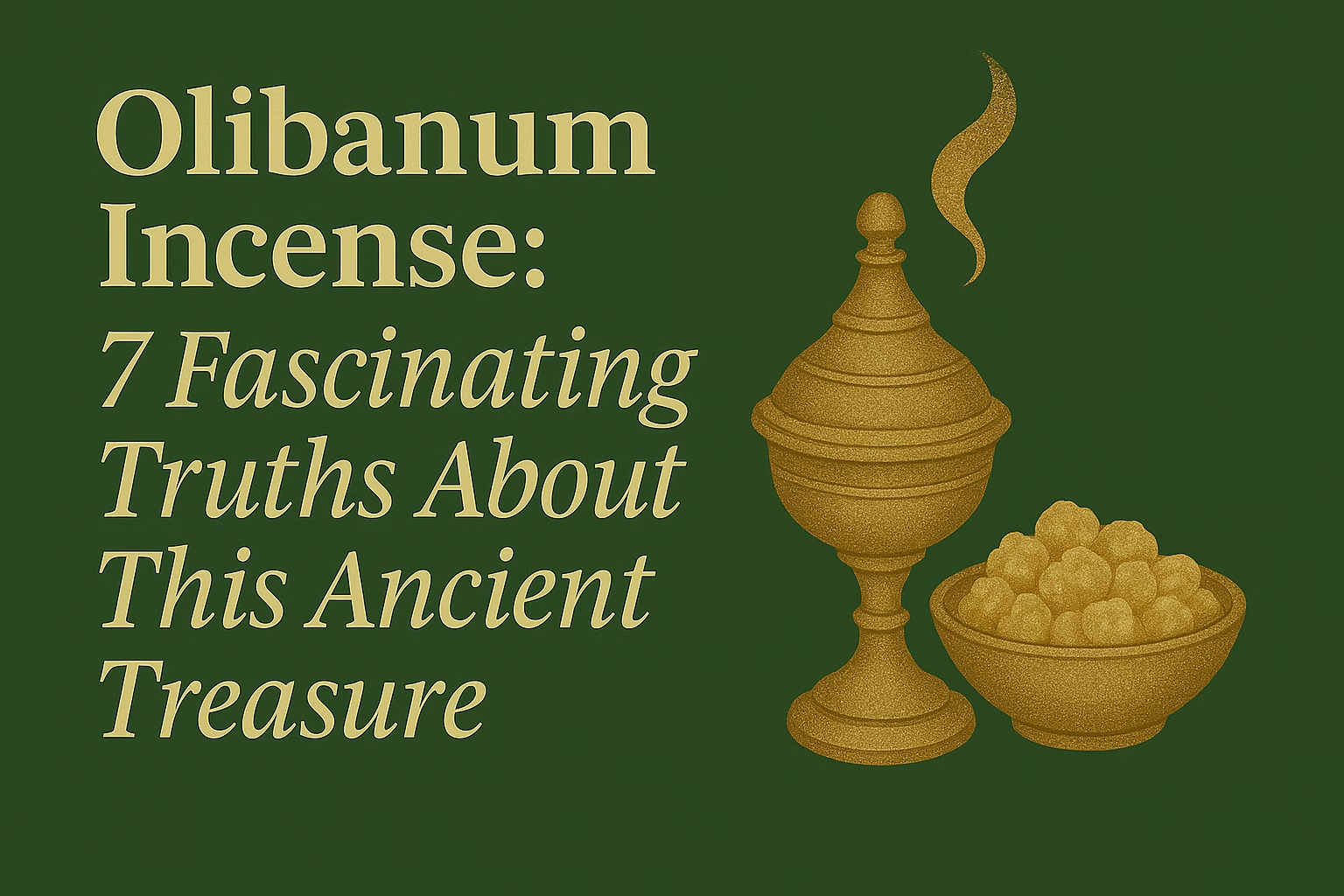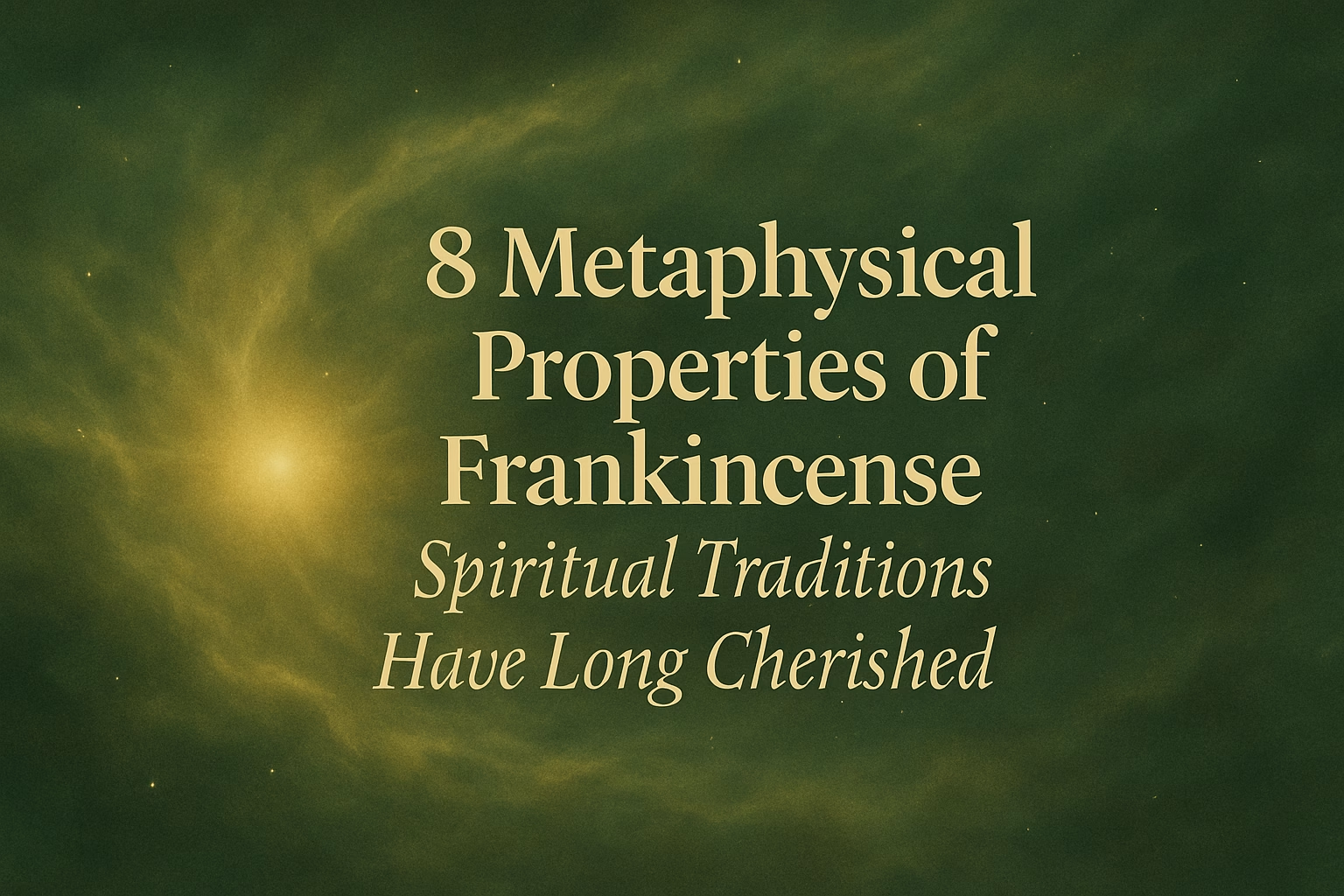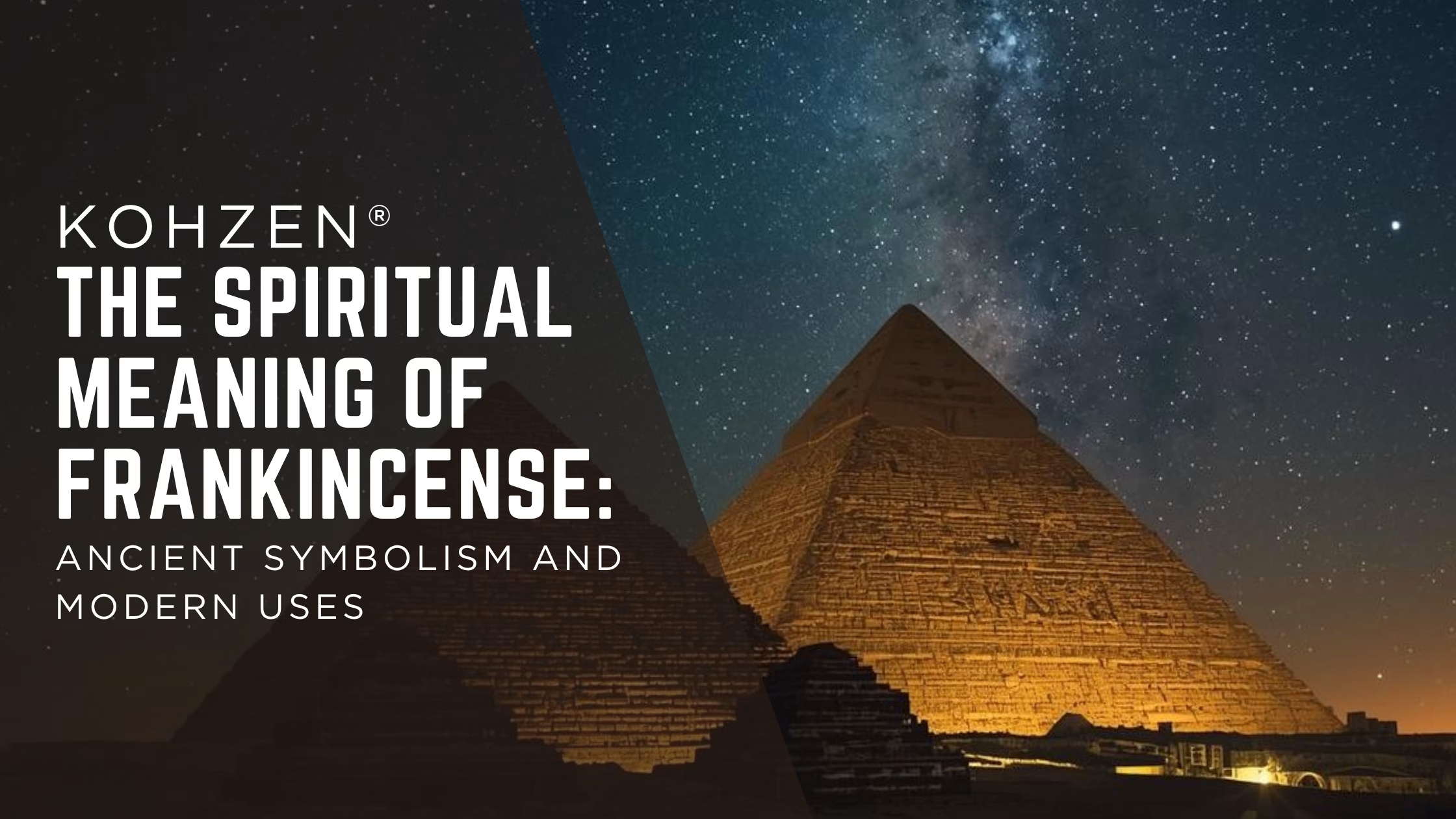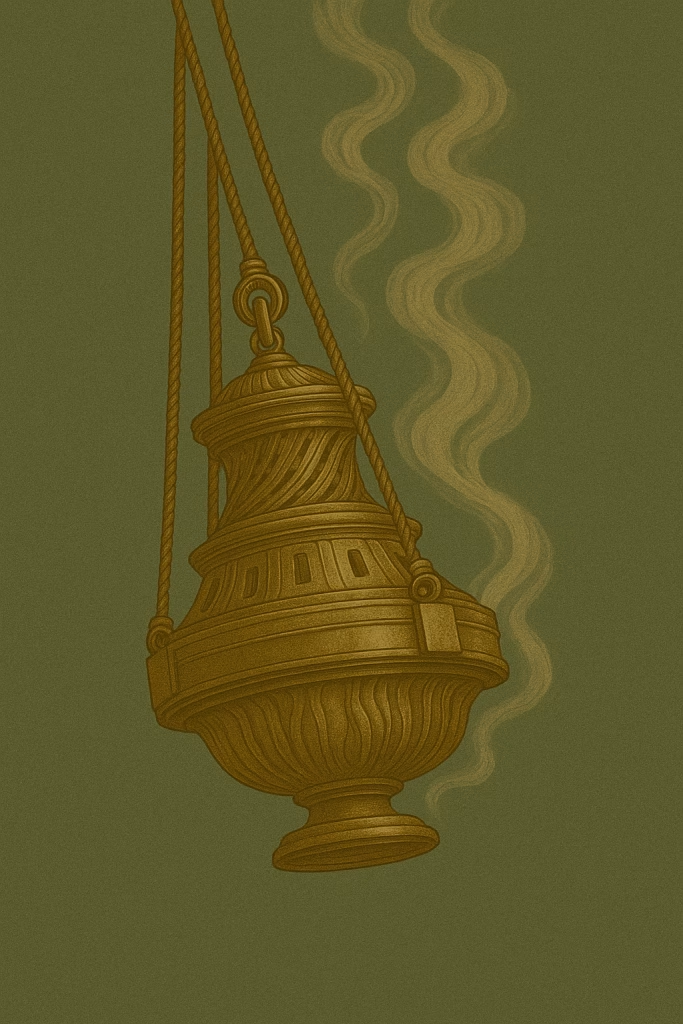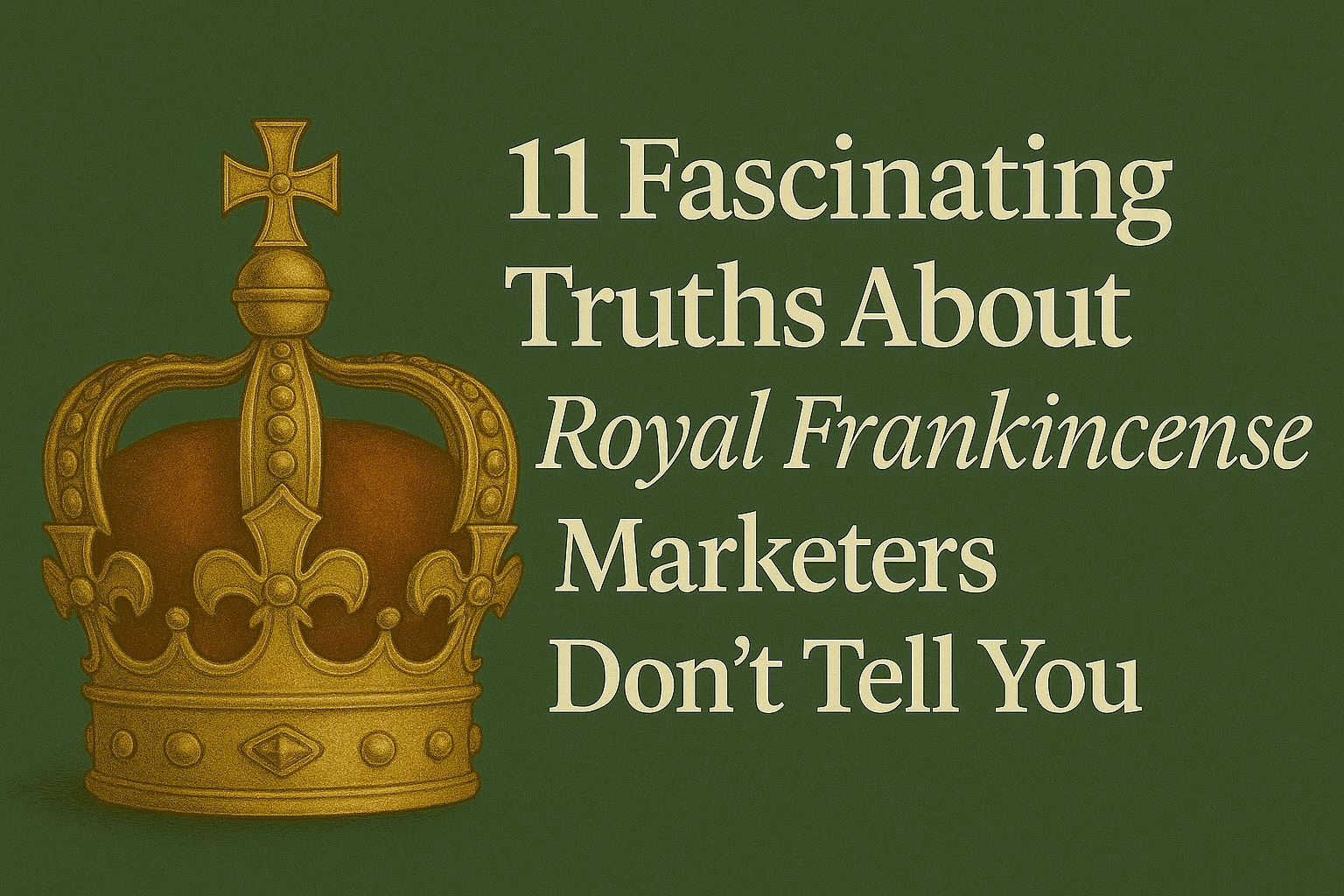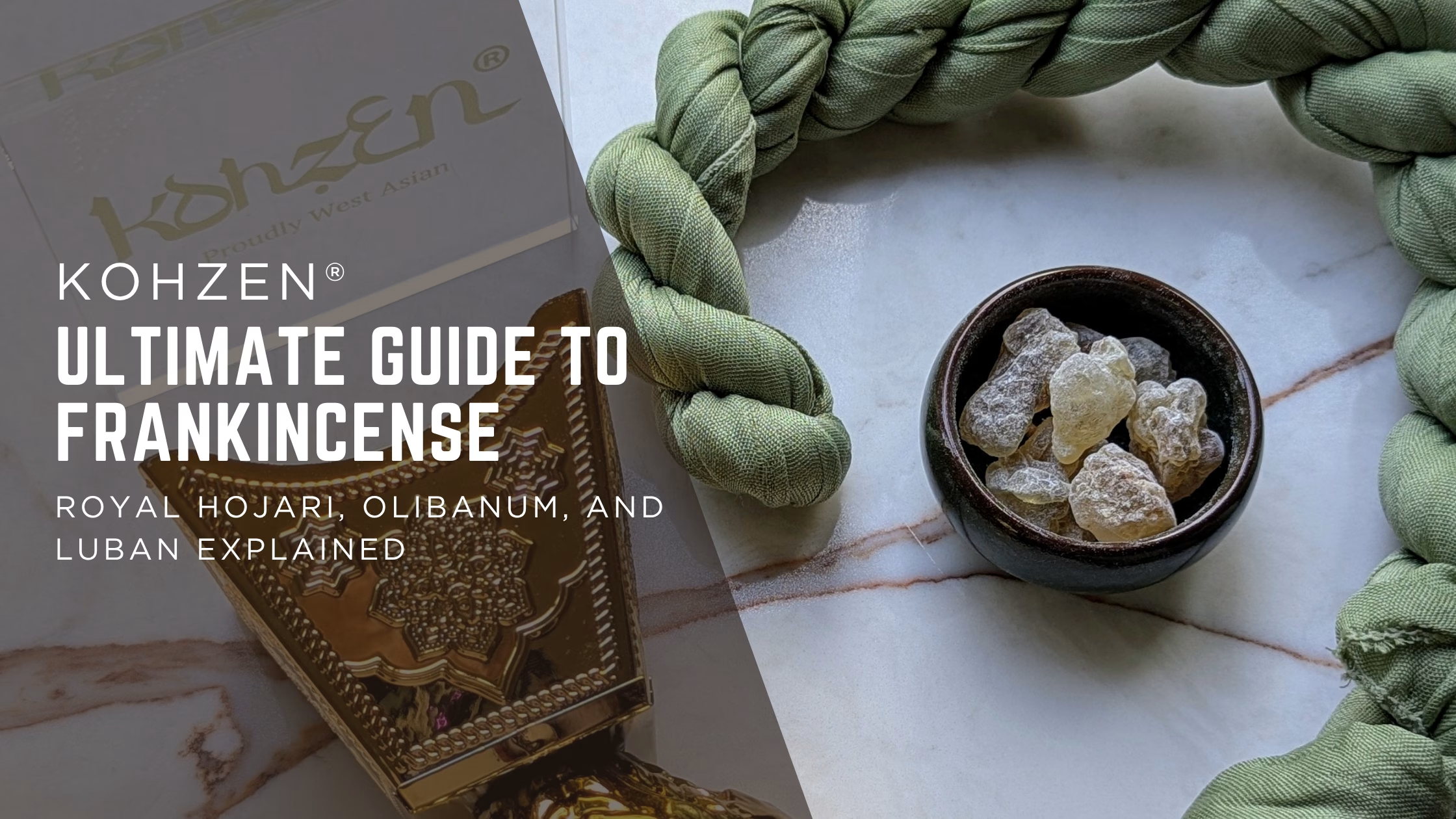Frankincense in the Bible is far more than an exotic spice or aromatic resin – it holds a sacred significance stretching from the Old Testament to the New Testament. This precious substance, derived from the dried sap “tears” of Boswellia trees in Arabia, was treasured as holy incense in ancient worship and valued as a gift fit for kings. Throughout Scripture, frankincense appears in laws of worship, poetry, and prophecy, each time laden with symbolism.
It rises in Temple smoke symbolising prayer and divine presence, it is offered to baby Jesus by the Magi in a gesture rich with meaning, and it even features in love poetry and visions of distant lands like Sheba. Yet many of these deeper truths remain little-known. In this pillar exploration, we unveil seven sacred truths about frankincense in the Bible – from its theological symbolism and ritual use, to its trade origins and archaeological evidence – all backed by historical and scriptural evidence. (As you read, you’ll find internal links to our Kohzen blog for further exploration, plus authoritative external sources to support each point.)
- Reference #1: Frankincense in the Bible Was a Holy Incense in Ancient Worship
- Reference #2: Frankincense in the Bible Symbolized Prayer and Divine Presence in Scripture
- Reference #3: Frankincense in the Bible Was a Gift Fit for a King – and Symbolic of Christ’s Divinity
- Reference #4: Ancient Trade Routes Brought Frankincense from Sheba (Arabia) to Biblical Lands
- Reference #5: Frankincense in the Bible Appears in Poetry and Prophecy as a Symbol of Luxury and Holiness
- Reference #6: Archaeology Confirms Frankincense in the Bible (and Beyond)
- Reference #7: Frankincense’s Legacy Continued – Early Christianity and Modern Use
- Key Takeaways and Reflection on Frankincense in the Bible and Sacred Texts
Reference #1: Frankincense in the Bible Was a Holy Incense in Ancient Worship
In the Bible’s earliest ritual instructions, frankincense holds pride of place as a holy incense ingredient. God commanded Moses to prepare sacred incense for the Tabernacle using a mixture of frankincense, stacte, onycha, and galbanum, seasoned with salt.
This perfumed blend, called ketoret in Hebrew, was burned morning and evening on the altar of incense as a pleasing offering to God (Exodus 30:34–36). Pure frankincense was also sprinkled on certain sacrifices – for example, on grain offerings and the weekly Bread of the Presence – as a symbol of dedication. When burned, its resin produces a white smoke with a rich perfume, hence the Hebrew name lebonah (“white”) referencing its milky droplets. The ancient Israelites considered this aroma holy. Only priests could offer frankincense in the sanctuary, and its use outside of worship was forbidden (Exodus 30:37–38). The significance is clear: frankincense was reserved for the worship of Yahweh, signaling the sanctity of every ritual where its fragrance arose.
Even after the Temple was built in Jerusalem, priests continued burning frankincense daily in solemn ritual. This made frankincense a hallmark of biblical worship, marking sacred space with its divine scent. Little wonder that later generations would remember ancient Israel’s faith whenever they smelled this “pure incense”. (Notably, modern frankincense in shops – often from different trees like the Norway spruce – is not the same resin as the biblical frankincense, which came from Boswellia trees.) The Bible’s emphasis on frankincense in worship underscores how central incense was to Judaic spirituality – it was the tangible fragrance of the holy.
Reference #2: Frankincense in the Bible Symbolized Prayer and Divine Presence in Scripture
Burning frankincense was not an empty ritual; it carried profound symbolism in the Bible. The billowing smoke ascending from the altar of incense came to represent prayers rising to heaven and the presence of God among His people. For example, the Psalmist pleads, “Let my prayer be counted as incense before You” (Psalm 141:2), directly linking incense to prayer.
As the fragrant smoke wafted upward in the Temple, worshippers believed their supplications rose with it to God’s throne. Similarly, in the New Testament, people gathered at the Temple’s incense offering hour to pray (Luke 1:10), and the Book of Revelation portrays heavenly beings offering “golden bowls full of incense, which are the prayers of the saints” (Revelation 5:8). Incense also symbolized God’s presence and name. The prophet Malachi envisioned a future where in every place “pure incense” would be offered to God’s Name (Malachi 1:11), showing incense as an emblem of the Divine Name and worship.
Because frankincense was a key ingredient in the sacred incense, it took on this theological meaning. When an Israelite smelled frankincense burning, it was a sensory reminder that God was near and receiving their worship. In Song of Songs, the beloved is described as perfumed with frankincense (Canticles 3:6) coming in “like pillars of smoke”, imagery that evokes a divine procession. Later Jewish tradition and Church fathers often interpreted incense as symbolizing purification and prayer, a practice that continues in many liturgical churches to this day. Thus, one sacred truth is that frankincense in the Bible was a metaphor for spiritual devotion – an earthly fragrance carrying heartfelt prayers to the heavenly realm.
Reference #3: Frankincense in the Bible Was a Gift Fit for a King – and Symbolic of Christ’s Divinity
One of the most famous appearances of frankincense in the Bible is as a gift of the Magi. In the Gospel of Matthew, wise men from the East arrive to honour the newborn Jesus, “opening their treasures, they presented to Him gifts of gold, frankincense, and myrrh” (Matthew 2:11). These were not random trinkets but highly symbolic offerings. In the ancient world, such costly items were standard gifts for a king or even a deity. Gold represented royalty, frankincense was a perfume or incense befitting divinity, and myrrh was a precious anointing oil.
Early Christian commentators saw deep meaning in these three gifts: gold acknowledging Christ’s kingship, frankincense signifying His priestly role and divine nature, and myrrh foreshadowing His suffering and death (as myrrh was used in embalming). This interpretation became popular through the centuries (even reflected in the carol “We Three Kings”).
Frankincense, in particular, was understood to honour Jesus as God Incarnate – since frankincense was used in worship, presenting it to Jesus implied worshipping Him as divine. Indeed, the Old Testament had predicted such homage: the prophet Isaiah foretold a time when nations would come “bearing gold and frankincense” and proclaiming the praise of the Lord. The Magi’s actions fulfilled this prophecy in a remarkable way. Beyond symbolism, frankincense may also have had practical significance for the Holy Family.
Researchers today note that frankincense contains compounds (like incensole acetate) that are thought to have medicinal and anti-inflammatory properties. Some scholars speculate the wise men, coming from regions familiar with frankincense’s healing uses, might have offered it as a remedy to protect the infant Jesus’s health. Whether or not the Magi “knew” of its pharmacology, the gift of frankincense clearly communicated that Jesus was no ordinary child – He was King and God worthy of worship. This sacred truth reveals why frankincense is forever linked with the Christmas story and Christian theology about Christ’s identity.
Reference #4: Ancient Trade Routes Brought Frankincense from Sheba (Arabia) to Biblical Lands
Frankincense is mentioned repeatedly in Scripture as coming from the distant lands of the East, indicating its exotic origin and high value. In fact, frankincense trees (Boswellia sacra) did not grow in the Eastern Mediterranean climate; they thrived in the arid mountains of southern Arabia (modern Oman and Yemen) and parts of Somalia and Ethiopia on the Horn of Africa. From these regions, frankincense resin was transported by camel caravan across hundreds of miles of desert.
The ancient Incense Trade Route wound northward from the Arabian Peninsula to the Levant, carrying frankincense, myrrh, spices, gold, and other luxury goods to Mediterranean markets. The Bible preserves clues of this trade network. Isaiah, envisioning tribute flowing to Jerusalem, writes “all from Sheba shall come bearing gold and frankincense” (Isaiah 60:6) – Sheba being the kingdom in South Arabia famed for its incense. Jeremiah likewise asks rhetorically, “What use to Me is frankincense that comes from Sheba?” (Jeremiah 6:20), implying that the Hebrews imported their frankincense from Arabia, particularly from Saba (Sheba). Historically, this is spot on: the Sabaeans of Yemen (biblical Sheba) and their neighbours grew wealthy as middlemen controlling the frankincense caravans.
For over a thousand years (ca. 8th century BC to 6th century AD), South Arabian kingdoms like Saba, Qataban, and Hadhramaut prospered by exporting frankincense and myrrh to Egypt, Lebanon, Cyprus, Greece, and Rome. Arab merchants would gather the resin at Arabian ports and oases, then trek through the Arabian Desert up to Gaza or Damascus. The journey was long and arduous – Roman authors like Pliny note it took 65 stages across the desert – but immensely profitable, with the Incense Route likened to a “caravan army” in scale.
Queen of Sheba’s famed visit to King Solomon (1 Kings 10) also hints at this trade: she arrived with camels bearing spices, gold, and precious stones in great abundance, quite possibly including frankincense among her “balsam oils” (Josephus even wrote that the Queen of Sheba ruled the incense trade). Thus, the presence of frankincense in the Bible opens a window onto the ancient world’s global commerce. It is a sacred truth that the incense offered in Jerusalem’s Temple had travelled hundreds of miles from Arabian groves, connecting the Holy Land to the broader economy of the Near East. This ancient globalisation underscores the extraordinary value frankincense held – literally worth its weight in gold in biblical times.
Reference #5: Frankincense in the Bible Appears in Poetry and Prophecy as a Symbol of Luxury and Holiness
Beyond ritual texts, frankincense graces the poetry and prophetic visions of the Bible, symbolizing the height of luxury, love, and sanctity. The Song of Songs (Song of Solomon) – a biblical book of romantic poetry – twice mentions frankincense in lush imagery. “Who is this coming up from the wilderness like pillars of smoke, perfumed with myrrh and frankincense?” asks Song 3:6, painting a picture of a bride or royal procession enveloped in rich fragrance.
Frankincense here evokes an atmosphere of opulence and sensual delight, fit for King Solomon’s wedding parade or a lover’s arrival. Later, the lover’s garden of spices in Song 4:14 includes frankincense alongside saffron, myrrh, aloes and more – “with all the finest spices”, showing it as one of the most prized scents on earth. This poetic use tells us that ancient Israelites knew frankincense as an elite luxury, a fragrance of romance and abundance.
Prophetic literature likewise casts frankincense as an emblem of holiness and divine worship. We saw Isaiah’s prophecy of nations bringing gold and frankincense to honour God’s glory in Zion. Another striking example is in Malachi 1:11, where the Lord declares that “in every place incense (frankincense) shall be offered to My name, and a pure offering”.
This vision elevates frankincense as a pure gift pleasing to God everywhere – a symbol that true worship (from all nations) would be as fragrant and acceptable as the sacred incense in Jerusalem. In the New Testament’s Book of Revelation, John’s vision of the New Jerusalem includes frankincense in a list of luxury goods traded by the world’s merchants (Revelation 18:13), right alongside gold, spices, and fine crafts. This hints that even by the first century AD, frankincense was still synonymous with wealth and sanctity on a global scale.
Furthermore, frankincense’s presence in prophecy sometimes carried a corrective tone. Through Jeremiah, God chastises the disobedient by saying, “What do I care about incense from Sheba…? Your burnt offerings are not acceptable” (Jer. 6:20). Here, even the finest frankincense from afar could not cover insincere worship – a reminder that ritual fragrance meant nothing without righteousness. Taken together, these poetic and prophetic uses reinforce frankincense’s dual symbolism: it represented the height of earthly value and pleasure, and at the same time the essence of what is consecrated to God. This sacred truth shows the rich metaphorical power frankincense held in the biblical imagination, from love songs to visions of the Messiah’s kingdom.
Reference #6: Archaeology Confirms Frankincense in the Bible (and Beyond)
For centuries, frankincense in the Bible was known only from texts – but modern archaeology has literally sniffed out evidence of its use in ancient worship, affirming the scriptural accounts. One groundbreaking discovery came from a variety of artifacts excavated in the the Negev. At the fortress of Tel Arad (a Judahite site from around the 9th–6th centuries BC), archaeologists uncovered a small shrine with two incense altars. Residue analysis published in 2020 revealed something astonishing: one altar had burned frankincense mixed with animal fat.
This marks the earliest known evidence of frankincense in Judahite worship, and indeed the first proof that the ritual use of imported frankincense – exactly as described in the Bible – was actually happening on the ground. It’s a vivid confirmation that people in the biblical kingdom of Judah were burning true frankincense resin as part of their religious ceremonies, likely to produce the pleasing aroma (the added animal fat would help it burn). The fact that this costly Arabian resin was found in a frontier shrine underscores how valued and widespread its sacred use was.
Other archaeological finds echo frankincense’s presence in the broader biblical world. In ancient Egypt, for instance, temple inscriptions and residues indicate frankincense was used in daily liturgies and royal burials (the Egyptians famously sent expeditions to Punt – modern Eritrea/Somalia – to obtain incense trees). Tombs of pharaohs have yielded charred frankincense among mummification materials, aligning with the Bible’s note that frankincense was part of the incense “for the souls of the dead to ascend to heaven”.
In the Roman period, analyses of burial sites in Europe (including Britain) have even detected traces of frankincense resin burned in funerary rites, reflecting how the practice spread across the empire. And in the Incense Road cities of the Nabataeans (like Petra in Jordan or Avdat in the Negev), archaeologists have found remains of incense burners, altars, and even storerooms for spice trade – painting a fuller picture of the frankincense economy that underpinned many biblical-era societies.
These scientific corroborations bolster the Bible’s historicity: they show that frankincense in the bible wasn’t just a literary symbol, but a real commodity used in actual worship and daily life in the ancient Near East. From the residue on a Judaean altar to the ruins of caravan towns, the physical evidence proclaims the same truth as Scripture – frankincense truly was the holy incense of the biblical world, burned in devotion by priests and commoners alike.
Reference #7: Frankincense’s Legacy Continued – Early Christianity and Modern Use
Although incense use faded from Jewish ritual after the Second Temple’s destruction (AD 70), the legacy of frankincense in the bible was carried on in Christianity and other traditions, bridging the biblical era to the present. In the earliest years of the Christian church, incense was initially viewed with suspicion (owing to its association with pagan sacrifice). But by the 4th century AD, as Christianity became the faith of the Roman Empire, the church re-embraced incense in worship. Historical records confirm that by the late 300s, incense (including frankincense) was used in eucharistic ceremonies to symbolize the prayers of the faithful rising to God.
Church fathers taught that incense’s fragrant smoke represented the prayers and the merits of the saints ascending to heaven – echoing the biblical symbolism from Psalms and Revelation. From that point on, incense became a staple of liturgy, especially in the Eastern Orthodox and Roman Catholic traditions. To this day, Roman Catholic and Eastern Orthodox churches prize frankincense as an essential incense resin for Mass, vespers, and other liturgies. A visitor to a Byzantine or Catholic service will see the priest swinging a censer (thurible) that fills the sanctuary with frankincense smoke – a direct continuation of the Temple rite, now offered in honour of Christ and still an important incense resin, particularly in Roman Catholic and Eastern Orthodox churches”.
Meanwhile, in the West Asia, the cultural use of frankincense never died out. Places like Oman and Yemen (the lands of origin) have burned frankincense in homes and mosques for centuries. Islamic tradition values frankincense for purifying the air and creating a holy atmosphere during prayer. In Oman, it’s common to greet guests with the smoke of frankincense as a sign of welcome and blessing – an echo of its ancient hospitality use. Thus, Muslims, like Jews and Christians, associate frankincense with cleansing, prayer, and sanctity in daily life. Beyond Abrahamic faiths, South Asian cultures (e.g. Hindu and Buddhist practices) have used local frankincense (often Boswellia serrata, called salai or loban) in their rituals and Ayurvedic medicine as wellkohzen.com.
Modern science and aromatherapy have also renewed interest in frankincense’s therapeutic benefits, vindicating some traditional beliefs. Studies have found frankincense oil and incense smoke can have calming, anti-anxiety effects on the brain, as well as antimicrobial properties that are thought to cleanse the air. These findings intriguingly correlate with why so many spiritual traditions used frankincense to “clear negative energy” and induce peace. In a way, the ancient idea of frankincense as a bridge between the human and divine – bringing calm, focus, and a sense of the sacred – is finding validation in a modern context.
From the Bible’s pages to church altars, and from desert trade routes to scientific journals, frankincense’s legacy lives on. This final sacred truth is that frankincense in the Bible was only the beginning of a long story – one that has seen this resin of the gods remain a symbol of holiness, prayer, and healing across more than 3,000 years of human history. Every time we catch a whiff of frankincense today, we partake in a tradition that truly connects us with the ancients and the divine.
Key Takeaways and Reflection on Frankincense in the Bible and Sacred Texts
- Holy Incense of the Israelites: Frankincense was a chief ingredient in the sacred incense (ketoret) burned in Tabernacles and Temples, reserved exclusively for worship of God. Its sweet smoke filled the holy places, marking rituals as set apart for Yahweh.
- Symbol of Prayer and Presence: In Scripture, rising incense smoke came to symbolize prayers ascending to heaven and the divine presence. Biblical writers likened frankincense’s aroma to the “fragrance” of devotion and God’s name among His people.
- Gift of the Magi – King and God: The Magi’s gift of frankincense to the infant Jesus (along with gold and myrrh) underscored Christ’s identity as King and divine High Priest. Frankincense, a perfume offered to deity, honoured Jesus’s divinity and holiness.
- Arabian Origins and Incense Routes: Frankincense in the Bible was sourced via ancient trade routes. Grown in Arabia and East Africa, it was transported by camel caravans (through Sheba, Ophir, etc.) to the Holy Land–a journey reflecting its great value in antiquity.
- Poetry, Prophecy, and Luxury: Biblical poets and prophets used frankincense as a byword for luxury and sanctity. The Song of Songs luxuriates in its scent for romantic imagery, while prophets like Isaiah and Malachi portray it as a pure offering that all nations will bring to honour God.
- Archaeological Confirmation: Modern archaeology has detected actual frankincense residues on altars, in tombs, and in incense burners, confirming the biblical record of its ritual use. These finds tangibly link us to the era of Solomon’s Temple and the incense rites described in Scripture.
- Enduring Sacred Legacy: Frankincense’s sacred role didn’t end with the Bible. The Christian Church adopted it in worship by the 4th century AD as a symbol of prayer a practice continued in Catholic and Orthodox liturgies today. Across cultures and centuries, frankincense remains a bridge between the material and the divine, used for prayer, meditation, and healing.
In summary, frankincense in the Bible emerges as a substance of profound spiritual import – a resin rich in symbolism, history, and mystery. It connected the ancient Israelites to its neighbours through trade, enriched the worship and writings of the Bible with its fragrance, and pointed to the Messiah’s mission. Understanding these truths not only gives us historical insight, but invites a deeper appreciation for this “sacred incense” and its role in human devotion. Next time you catch the woody-citrus scent of frankincense, remember that you’re inhaling a sacred tradition beloved by prophets, kings, apostles, and saints.
Experience the biblical aroma of frankincense for yourself – and infuse your own spiritual practice or home with its ancient sanctity. Visit our KohzenOfficial Etsy shop for premium, authentic frankincense resins and products sourced from its historic homelands. Embrace the heritage of this biblical treasure, and let its fragrance inspire your prayers and uplift your soul today!
